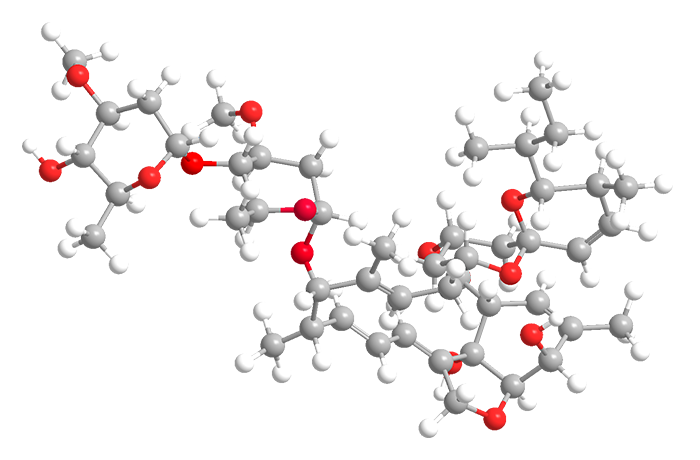What molecules are we?


Half of the 2015 Nobel Prize in Physiology or Medicine went to William C. Campbell at Drew University (Madison, NJ) and Satoshi Ōmura at Kitasato University (Tokyo) for the discovery of a class of drugs known as avermectins and ivermectins. The awardees discovered that these drugs cure human diseases such as river blindness and elephantiasis that are caused by parasitic roundworms. They are also effective against heartworms in dogs.
The avermectins and ivermectins are sets of macrocyclic lactone isomers. They have almost identical structures; ivermectins are made by hydrogenating one of the ring double bonds in avermectins. The B1a avermectin isomer is shown here.
In 1978, Ōmura and co-workers isolated avermectins from soil samples that contained Streptomyces bacteria. The specific bacterium was later named S. avermectinius. The same year, the avermectin mixture was sent to Campbell, then at Merck Sharp & Dohme, for testing as an antibiotic. In the course of their studies, Campbell’s team found that the B1 series of avermectins and ivermectins have the best potency against roundworms, but the ivermectin isomers have a better safety profile.
The other half of the prize went to Youyou Tu at the China Academy of Traditional Chinese Medical Sciences (Beijing) for her discovery of the antimalarial drug arteminisin, which was profiled in Molecule of the Week in 2005.

Learn more about this molecule from CAS, the most authoritative and comprehensive source for chemical information.
Molecule of the Week needs your suggestions!
If your favorite molecule is not in our archive, please send us a message. The molecule can be notable for its current or historical importance or for any quirky reason. Thank you!
Stay Ahead of the Chemistry Curve
Learn how ACS can help you stay ahead in the world of chemistry.

